Are you looking to simplify the process of submitting a statutory declaration? Crafting a clear and concise letter for this important document can make all the difference, ensuring that your declaration is understood and accepted. In this article, we'll guide you through a practical template that will help you communicate your intentions effectively. So, stick around to discover how to compose your letter with ease!
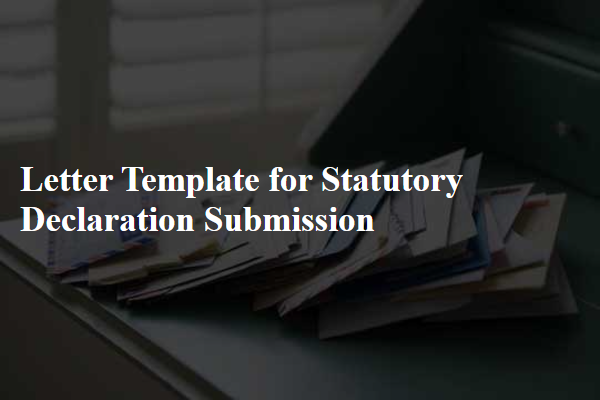
Clear and concise language
A statutory declaration is a formal statement declared to be true in the presence of an authorized witness. This legal document often includes details such as the declarant's full name, address, and the specific facts being attested. For instance, a statutory declaration concerning personal identification may mention the declarant's date of birth, government-issued identification numbers, and a sworn statement affirming the accuracy of the provided information. The final component usually requires the declarant's signature, along with the signature and stamp of the authorized witness, establishing credibility and legal compliance.
Accurate personal and declaration details
Statutory declarations require precise information to ensure legal validity. Personal details include full name, address, date of birth, and occupation, providing a clear identification of the declarant. An accurate declaration should explicitly state the facts being affirmed, such as events and circumstances surrounding the declaration, including relevant dates and locations. For instance, if declaring a change of name, include both the previous and new names along with dates of legal changes. It's essential to sign the document in the presence of an authorized witness, which may vary by jurisdiction but typically includes notaries or legal professionals, ensuring the declaration's authenticity.
Compliance with legal requirements
Statutory declarations serve as a vital legal document, often required in various situations including identity verification or legal proceedings. Compliance with legal requirements involves adhering to the specific provisions set forth in the relevant legislation, such as the Statutory Declarations Act of 1835 in the United Kingdom or corresponding acts in other jurisdictions. A statutory declaration must contain crucial elements including the declarant's full name, address, and occupation, alongside a clear statement affirming the truthfulness of the contents. Notary public or qualified witness, depending on local laws, must attest the declaration to ensure its validity. Accurate formatting, including proper dates and specific wording, is paramount to meet the expected legal standards. Adherence to these meticulous legal procedures fosters trust and authenticity in legal contexts, enabling individuals to fulfill various administrative and legal obligations effectively.
Proper formatting and structure
A statutory declaration is a formal document that allows an individual to declare something to be true in a legal context. Proper formatting and structure are essential for ensuring the document's validity and recognition. The declaration begins with a title, typically "Statutory Declaration," centered at the top. The declarant's personal details follow, including full name, address, and occupation. The body contains a series of numbered statements outlining the facts being declared, written clearly and concisely. Each statement should be made under oath or affirmation. At the conclusion, a statement indicating the declaration is made in accordance with legal requirements, usually alongside a signature line. Finally, the date and location of the declaration's signing are included. A witness, typically a licensed legal professional, must sign below the declarant's signature, confirming the identity of the declarant and the authenticity of the declaration.
Inclusion of witness or notary section
A statutory declaration submission must include a clear and concise statement of the facts, confirming their authenticity. The declaration should be made in front of a witness or a notary, ensuring lawful validation. A witness could be an individual authorized to witness statutory declarations, such as a lawyer, police officer, or a government employee. Alternatively, a notary public serves the same purpose, providing further legal acknowledgment. The document should specify names, addresses, and qualifications of the witness or notary to enhance the credibility of the declaration. Proper formatting and adherence to jurisdiction-specific guidelines are essential for acceptance.
Letter Template For Statutory Declaration Submission Samples
Letter template of statutory declaration for educational qualifications.
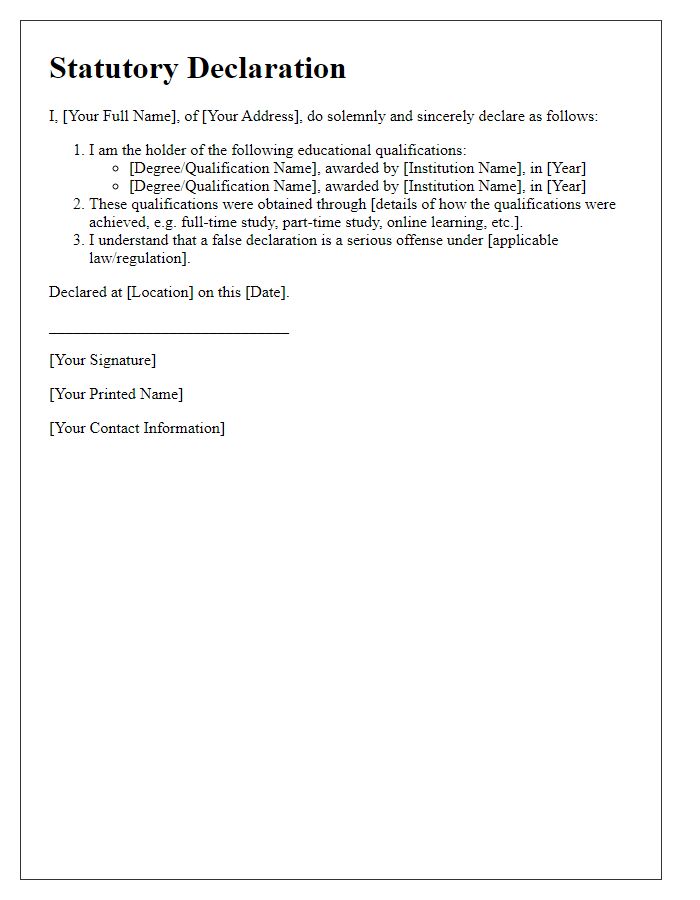

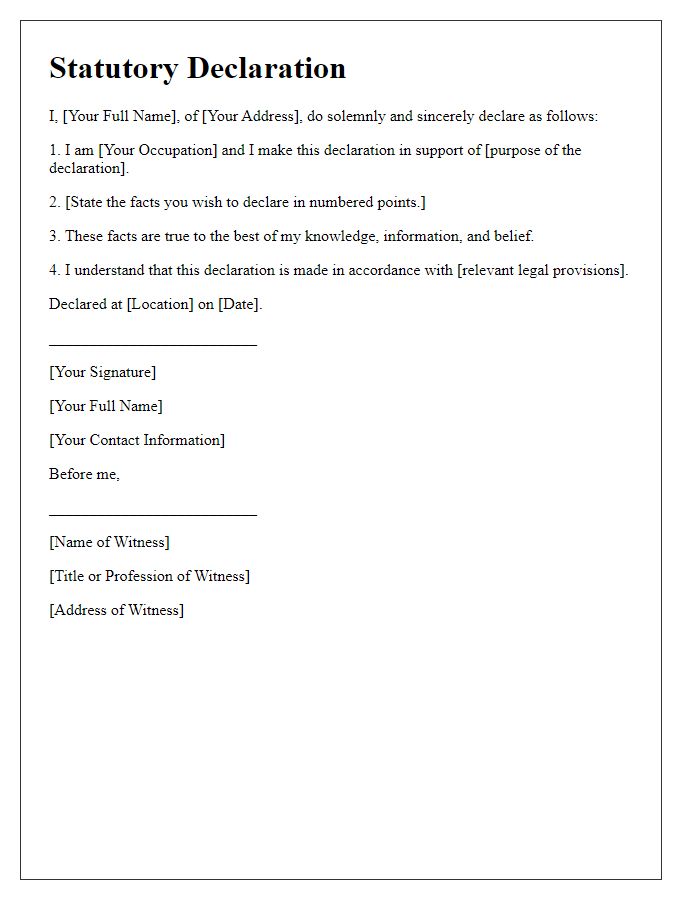
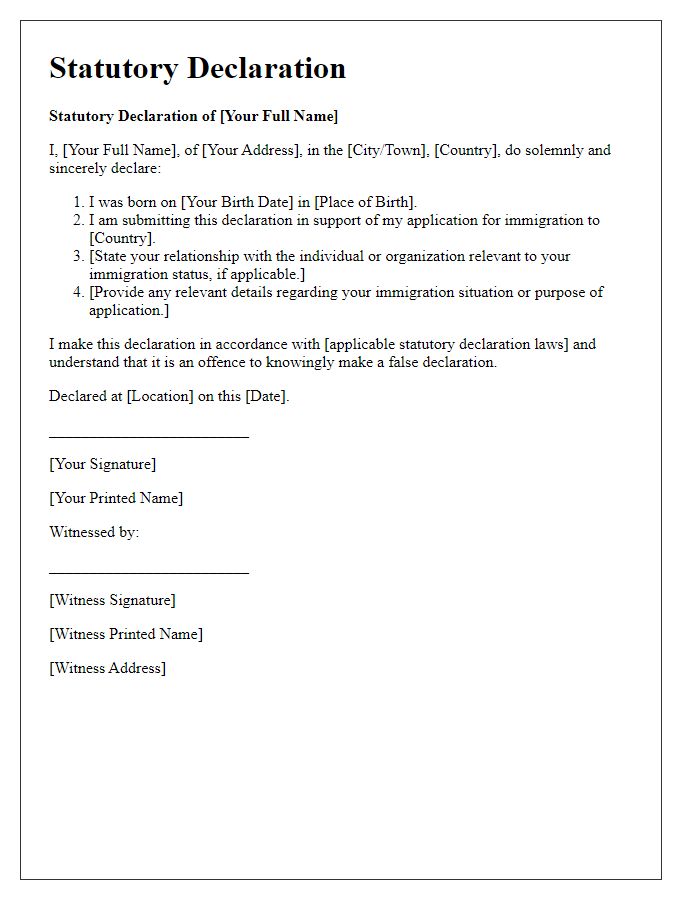
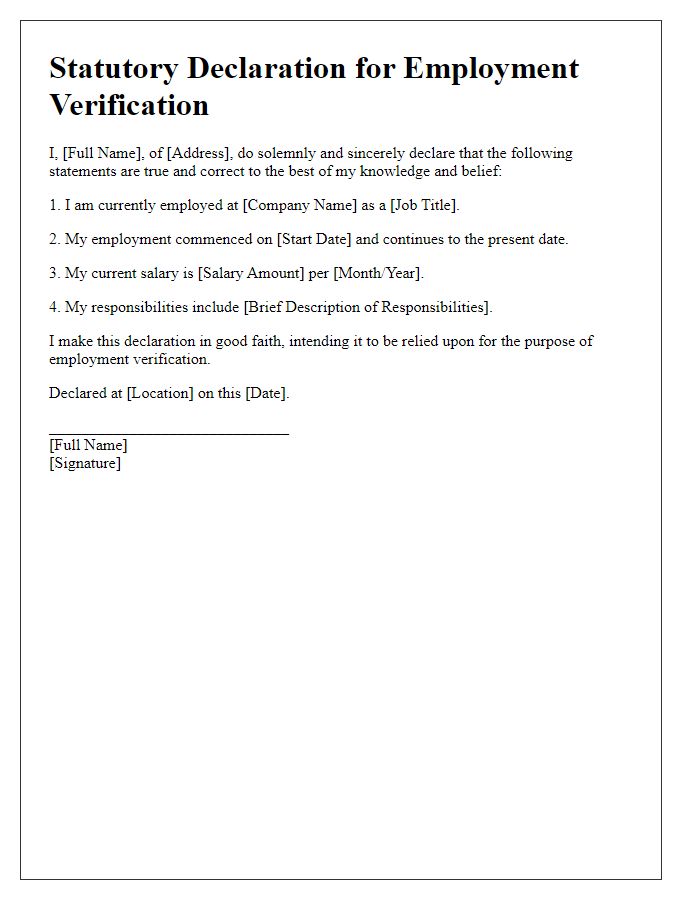
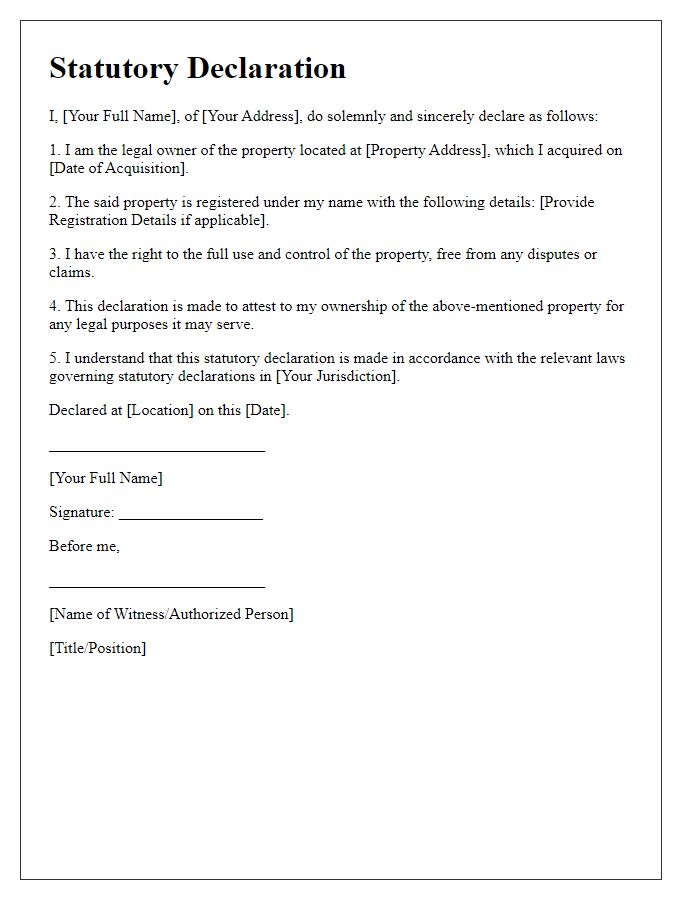
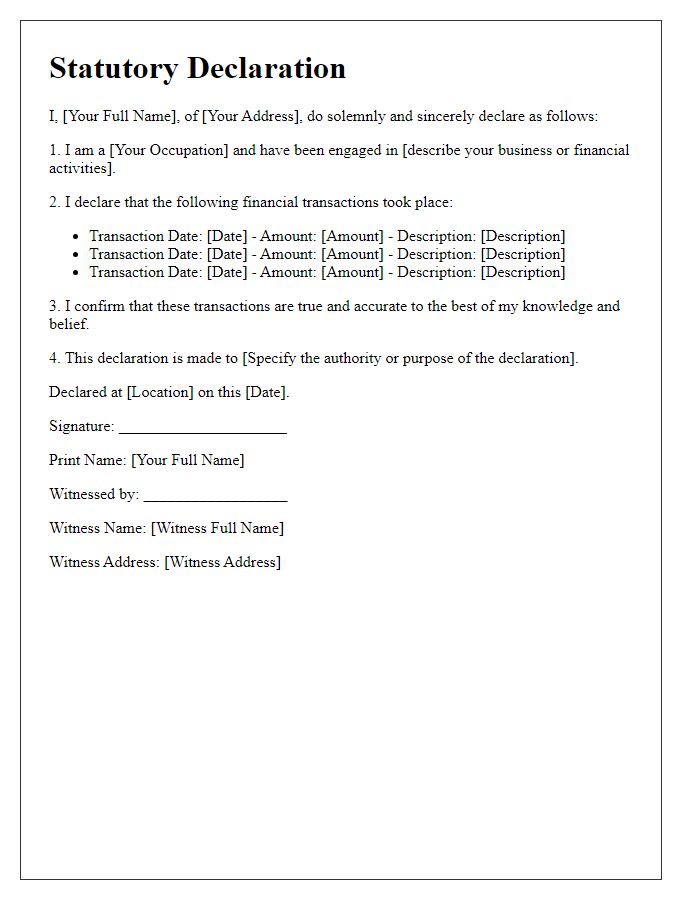
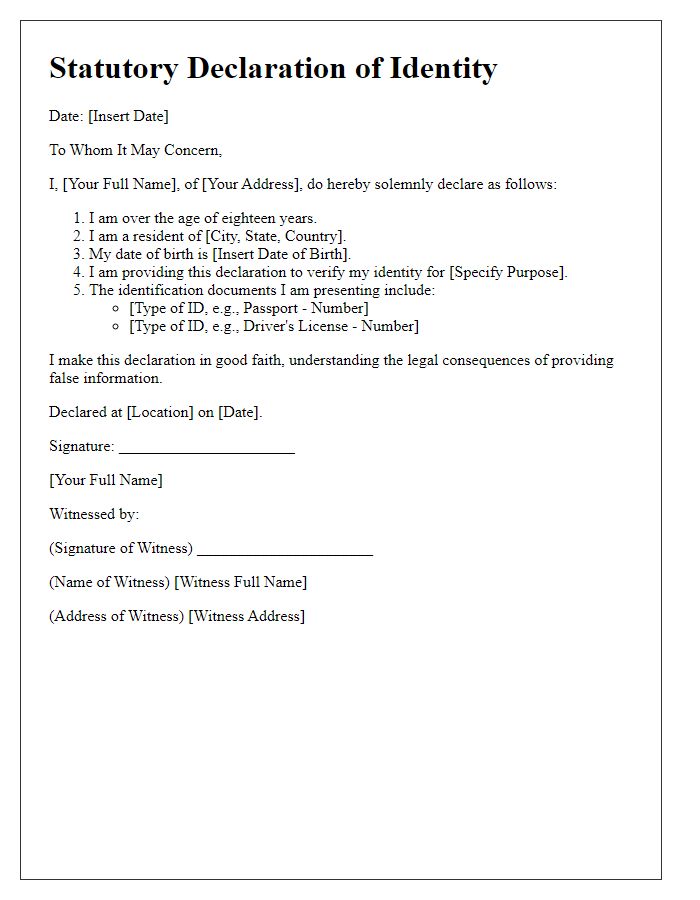
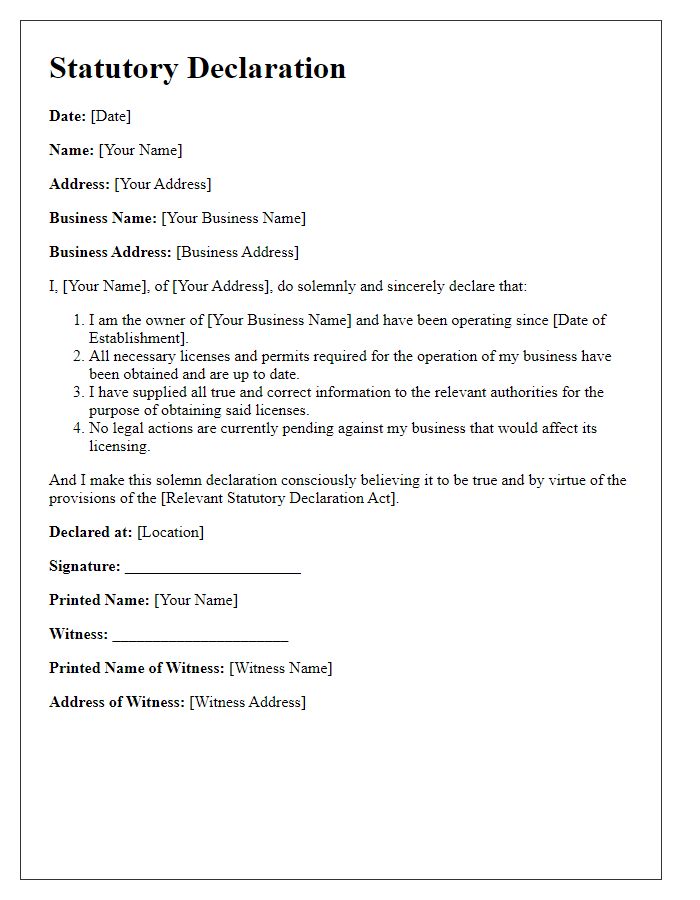

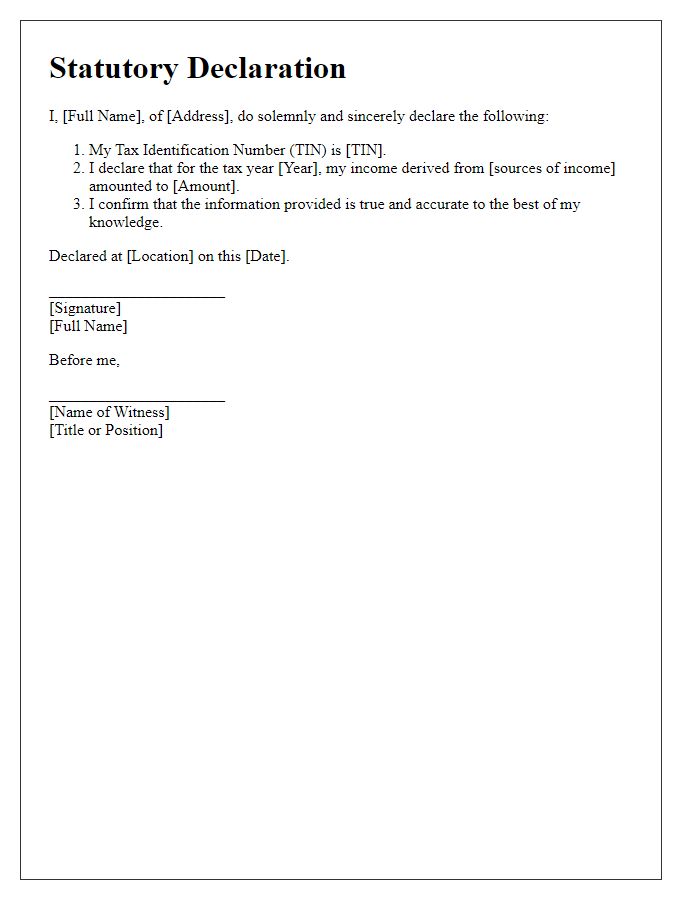


Comments